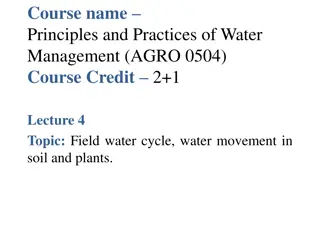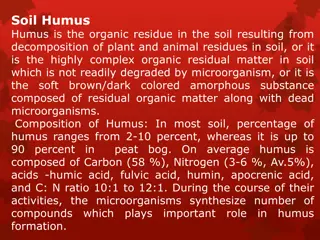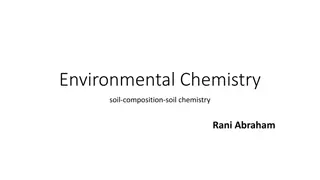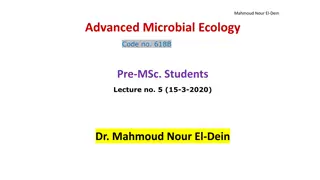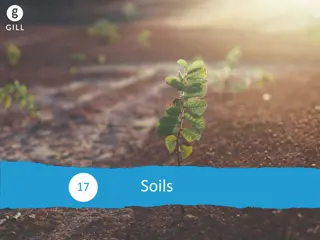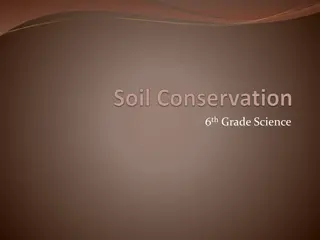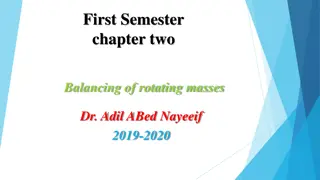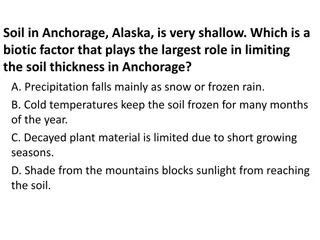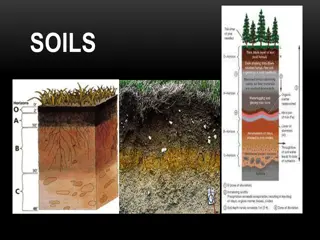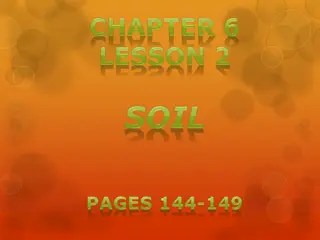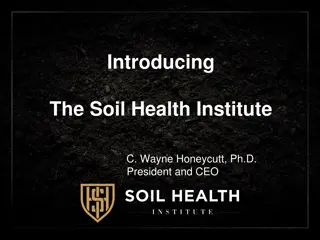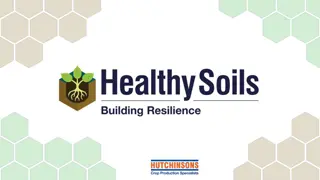The Evolving Landscape of Digital Soil Mapping: Balancing Innovation and Stability
The continual evolution of Digital Soil Mapping (DSM) has introduced a paradigm known as "chasing the new horizon," emphasizing innovation and exploration. However, challenges such as lack of adherence to standards, covariate limitations, and concerns about the role of soil scientists in the face of DSM advancements have emerged. The discussion also highlights the need for more measured data for temporal modeling in soil science.
Uploaded on Oct 10, 2024 | 3 Views
Download Presentation

Please find below an Image/Link to download the presentation.
The content on the website is provided AS IS for your information and personal use only. It may not be sold, licensed, or shared on other websites without obtaining consent from the author.If you encounter any issues during the download, it is possible that the publisher has removed the file from their server.
You are allowed to download the files provided on this website for personal or commercial use, subject to the condition that they are used lawfully. All files are the property of their respective owners.
The content on the website is provided AS IS for your information and personal use only. It may not be sold, licensed, or shared on other websites without obtaining consent from the author.
E N D
Presentation Transcript
Chasing the new horizon vs operational stability The continual evolution of DSM has led to a paradigm we call chasing the new horizon . It is perhaps best illustrated by the frequency with which the phrase DSM has the potential to :::. is used in DSM related publications and conference presentations. This is in comparison to conventional survey, in which the outputs and outcomes are well known and understood by both producers and users, before the survey is undertaken. Lack of Standards Unfortunately, evidence from published DSM surveys within Australia suggests that adherence to standards is ad hoc at best and in some instances, poor; e.g. the publication of DSM data to a precision beyond that specified in the standard (and common sense) in the NAWRA explorer website (https:// nawra-explorer.csiro.au/#soil accessed 13 February 2020) and in downloadable data for the Soil Grid of Australia Covariate limitations The current approach within DSM is to utilise as many covariates as possible and hope for/pick the best . The poor predictive outcomes within some DSM projects suggests that this is not the best approach. There are also key limitations in relation to covariate resolution and locational accuracy that remain operationally significant and are likely to do so for a long time. Importantly, few covariates represent the below-surface environment effectively. Given many of the soil attributes of interest concern the subsoil, the ability to predict these in the absence of covariates representing that domain is likely to remain limited.
The role of the expert There is a risk that DSM methods will lead to a perception that soil scientists are not needed and it only requires a modelling expert to make a soil map. It is ironic that at a time when universities around Australia are struggling to maintain the teaching of soil science (Rogers et al. 2020), elements of the soil science profession have developed a methodology that may remove a potential career pathway for soil science graduates . The soil survey community is quite rightly sceptical of blackbox approaches, which ironically suffer from many of the same problems that have been ascribed to conventional survey: the output has been derived using opaque, inefficient processes that cannot be replicated. There is consequently a real risk that in the future, soil survey (in the form of DSM) will more and more become the domain of desktop theorists with little real field experience.
Discussion Discussion Lack of measured data for temporal modelling



